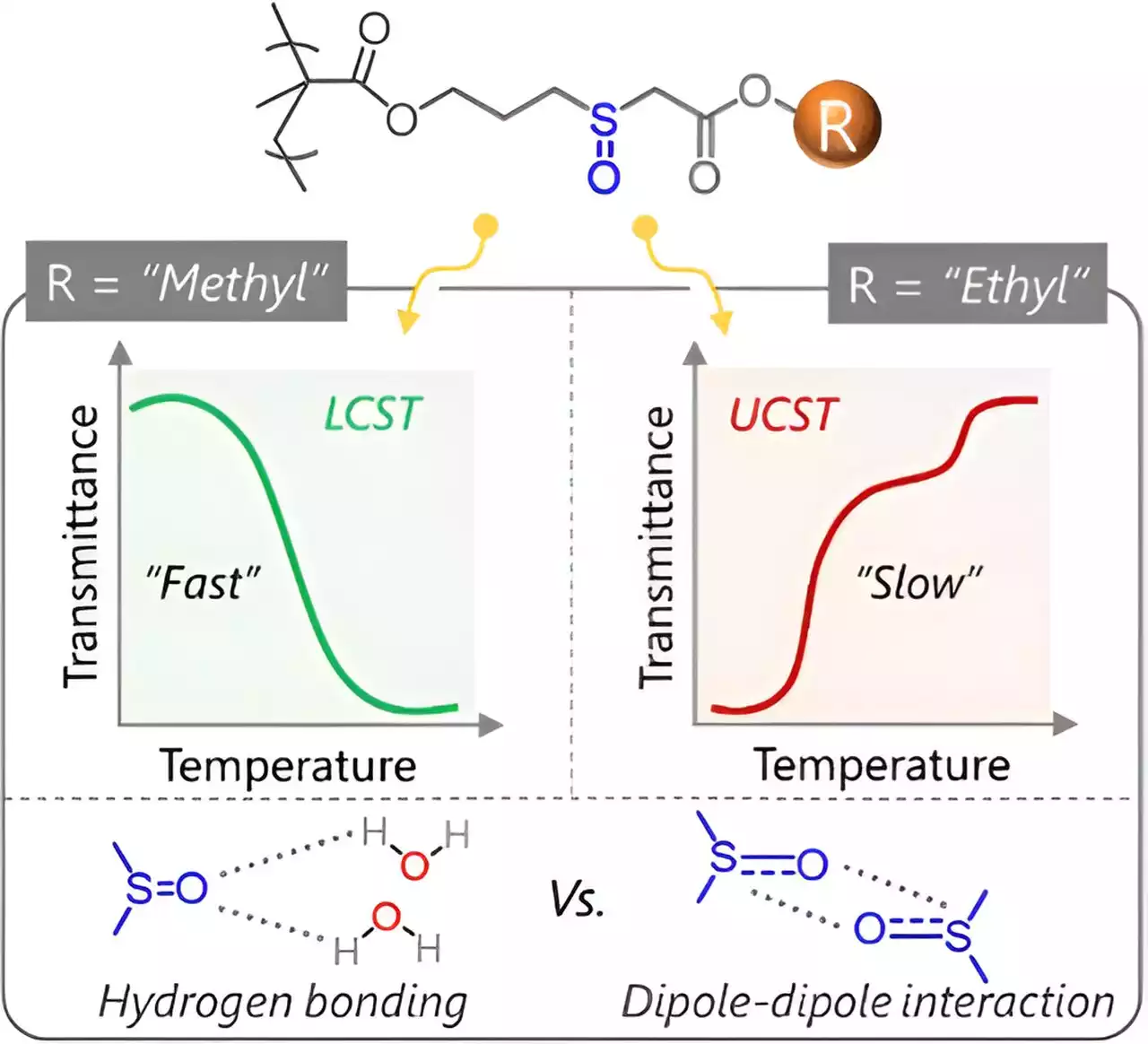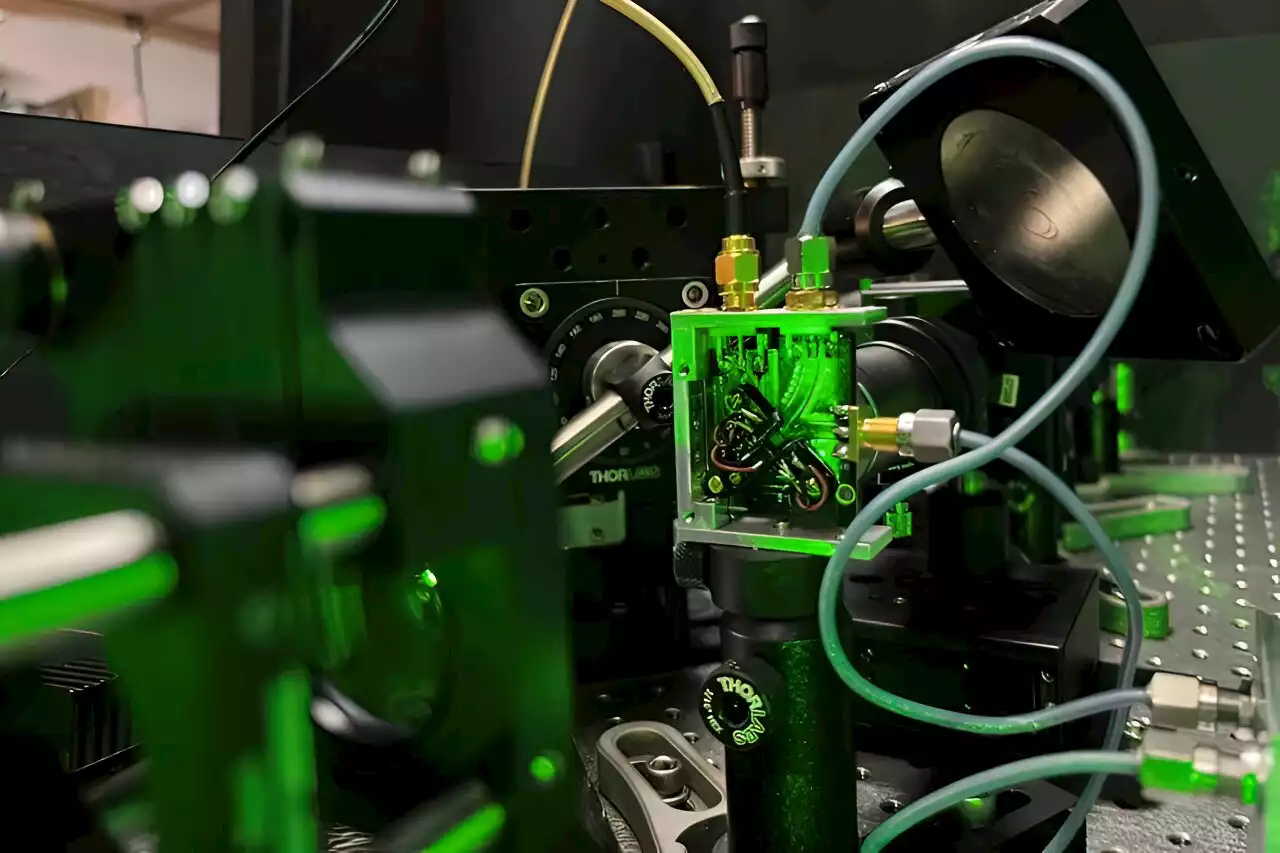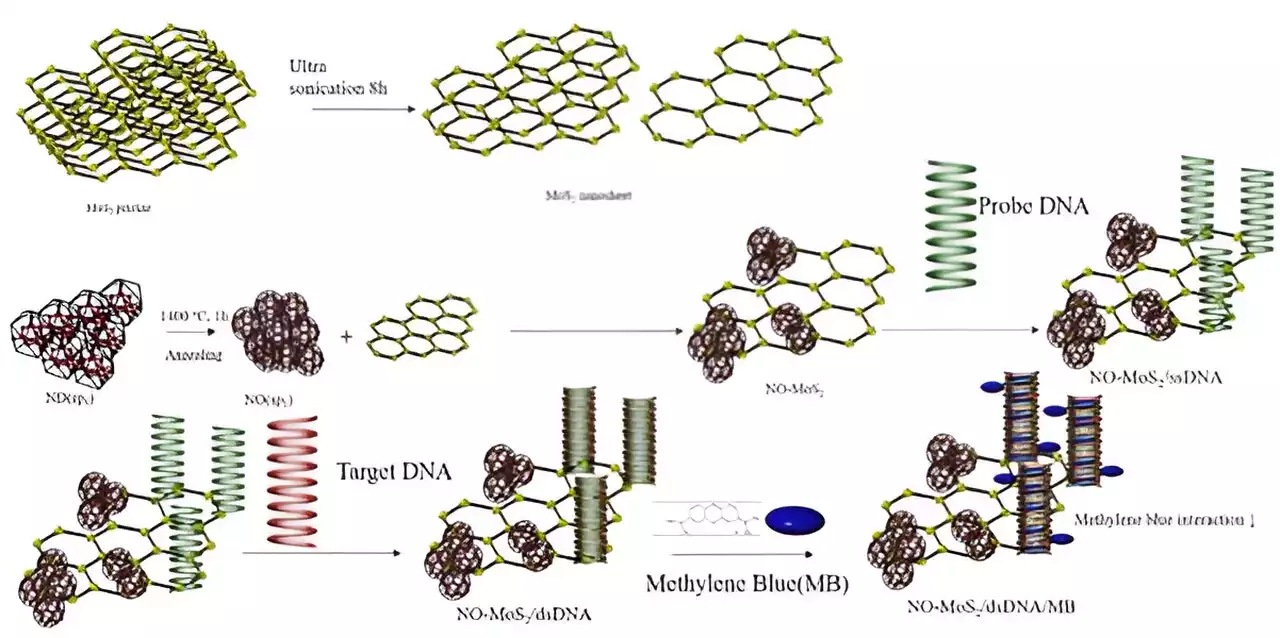Microscope based on fiberoptic components designed for studying cellular effects of drug combinations. Researchers have developed a fluorescence microscope that uses structured illumination for fast super-resolution imaging over a wide field of view. This advanced microscope is tailored to capture
Researchers developed a fluorescence microscope that uses structured illumination for fast super-resolution imaging over a wide field of view. It can also be used for multicolor and high-speed imaging. Credit: Henning Ortkrass, Bielefeld University
“Polypharmacy — the effect of the many combinations of drugs typically prescribed to the chronically sick or elderly — can lead to dangerous interactions and is becoming a major issue,” said Henning Ortkrass from Bielefeld University in Germany. “We developed this microscope as part of the EIC Pathfinder OpenProject DeLIVERy, which aims to develop a platform that can investigate polypharmacy in individual patients.
The new fluorescence microscope uses structured illumination for fast super-resolution imaging over a wide field of view. Multicolor imaging can also be performed, as shown in the video. Credit: Henning Ortkrass, Bielefeld UniversityThe new microscope is based on super-resolved structured illumination microscopy , which uses a structured pattern of light to excite fluorescence in a sample and achieve a spatial resolution beyond the diffraction limit of light.
“The fiber selection and phase shift is performed using a newly designed fiber switch based on galvanometric mirrors and MEMS-mirrors,” said Ortkrass. “We also custom-designed a hexagonal holder that collimates and refocuses the beams of the six fibers into the microscope to illuminate a large FOV and allow precise adjustment of all beams.
Australia Latest News, Australia Headlines
Similar News:You can also read news stories similar to this one that we have collected from other news sources.
 Researchers develop polymer that can be adapted to high and low temperature extremesThe modern world is filled with synthetic polymers, long-chained molecules designed by scientists to fill all manner of applications.
Researchers develop polymer that can be adapted to high and low temperature extremesThe modern world is filled with synthetic polymers, long-chained molecules designed by scientists to fill all manner of applications.
Read more »
 Researchers develop hurricane power outage prediction model that outperforms traditional methodsUtility companies are generally well-equipped to handle routine blackouts, but often struggle with extreme weather events like hurricanes.
Researchers develop hurricane power outage prediction model that outperforms traditional methodsUtility companies are generally well-equipped to handle routine blackouts, but often struggle with extreme weather events like hurricanes.
Read more »
 Researchers develop a protocol to extend the life of quantum coherenceFor years, researchers have tried various ways to coax quantum bits—or qubits, the basic building blocks of quantum computers—to remain in their quantum state for ever-longer times, a key step in creating devices like quantum sensors, gyroscopes, and memories.
Researchers develop a protocol to extend the life of quantum coherenceFor years, researchers have tried various ways to coax quantum bits—or qubits, the basic building blocks of quantum computers—to remain in their quantum state for ever-longer times, a key step in creating devices like quantum sensors, gyroscopes, and memories.
Read more »
 Researchers develop novel DNA biosensor for early diagnosis of cervical cancerMolybdenum disulfide (MoS2) has recently garnered attention among materials science researchers owing to its ability to form two-dimensional nanosheets like graphene. The nanosheets are created by the stacking of S–Mo–S layers interacting via Van der Waals interactions.
Researchers develop novel DNA biosensor for early diagnosis of cervical cancerMolybdenum disulfide (MoS2) has recently garnered attention among materials science researchers owing to its ability to form two-dimensional nanosheets like graphene. The nanosheets are created by the stacking of S–Mo–S layers interacting via Van der Waals interactions.
Read more »
 Pa. High School Football Report Podcast: The trouble with stats in Pa. high school footballThis week's episode talks the inconsistency of stat-keeping across the state, as well as looking ahead to some of the best
Pa. High School Football Report Podcast: The trouble with stats in Pa. high school footballThis week's episode talks the inconsistency of stat-keeping across the state, as well as looking ahead to some of the best
Read more »
 Hockey Canada summit puts elite men's hockey under the microscopeThe two\u002Dday summit tackled elite men’s hockey, which dominates the sport’s culture in Canada, and the toxic masculinity in it that can also breed racism,…
Hockey Canada summit puts elite men's hockey under the microscopeThe two\u002Dday summit tackled elite men’s hockey, which dominates the sport’s culture in Canada, and the toxic masculinity in it that can also breed racism,…
Read more »
